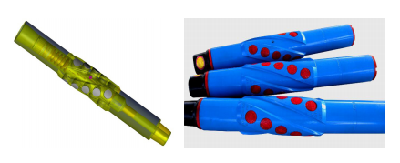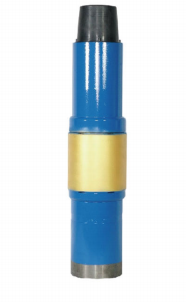The QDT (Quad Density Tool) Pulse Generator is a specialized component within pulsed neutron logging tools used in cased-hole reservoir evaluation during oil drilling and production. Its primary function is to generate controlled bursts of high-energy neutrons that interact with the formation, enabling critical measurements through casing and cement. Here are its key functions and applications:
1. Formation Porosity Measurement
- Emits pulsed neutrons that collide with hydrogen atoms in pore fluids (oil, gas, water).
- Measures neutron slowing-down time to calculate porosity, even behind casing.
- Particularly effective for identifying gas zones (low hydrogen density).
2. Lithology & Mineralogy Identification
- Neutrons interact with elements like silicon (sandstone), calcium (limestone), and chlorine (salt).
- Detects capture gamma rays to distinguish rock types and clay content.
3. Fluid Typing & Saturation Analysis
- Uses thermal neutron capture cross-section (Σ) to differentiate fluids:
- High Σ: Saline water (chlorine absorbs neutrons).
- Low Σ: Oil/gas.
- Quantifies water saturation (S_w) and monitors changes over time (e.g., water encroachment).
4. Cased-Hole Reservoir Monitoring
- Works through steel casing and cement, eliminating the need for production tubing removal.
- Tracks fluid saturation changes during production/injection (e.g., water-flood efficiency).
5. Gas Detection & Quantification
- Gas has low hydrogen density, causing slower neutron moderation ("long slowing-down time").
- Highlights gas zones or gas-cap expansion behind casing.
6. Time-Lapse (4D) Surveillance
- Repeated logging tracks dynamic reservoir changes:
- Fluid contact movement (e.g., rising oil-water contact).
- Sweep efficiency in enhanced oil recovery (EOR).
In summary, the QDT Pulse Generator enables through-casing reservoir evaluation, critical for optimizing production, diagnosing problems, and maximizing recovery in mature fields. Its pulsed neutron technology provides insights inaccessible to conventional open-hole tools.










